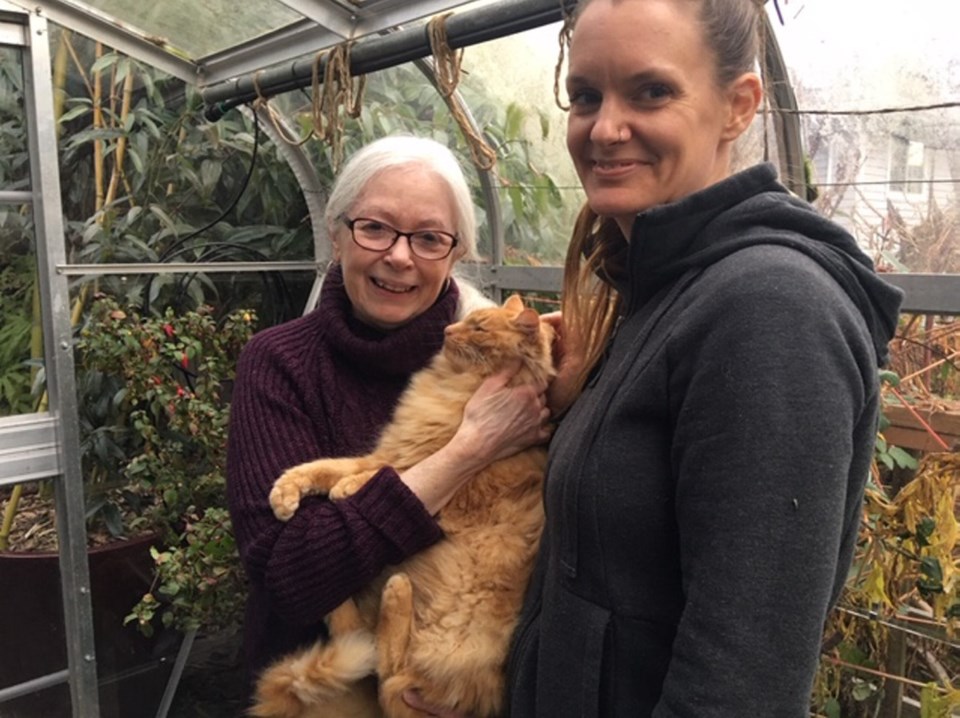Kipling the orange tabby cat spent 20 months wandering the wilderness off Willis Point Road before he was finally reunited with his owner in Brentwood Bay.
It was all thanks to Kipling’s unlikely connection with animal lover Lisa Callow, who goes to that particular spot for comfort, and some amateur sleuthing by a Greater Victoria pet rescue agency.
On Nov. 18, Callow went for a walk in the woods near the Hartland landfill. She sometimes goes there to connect with her father, who died in September 2017.
The former Calgary Humane Society worker was just about to leave when she spotted an longhaired orange tabby cat under a tree. Callow assumed the cat was feral, but he started meowing at her. He wouldn’t let Callow get close, but didn’t run away, either.
Callow left, thinking the cat likely lived at a nearby rural property.
That night, she couldn’t stop thinking about the cat, so she went back into the forest with some kitty treats.
“I figured if he was still there, he probably did need some help,” she said.
Despite the darkness, she found the cat, which ate the treats and started to meow.
Callow decided to leave her rescue until the light of day Monday.
The cat was stand-offish at first, but when she ignored him, he walked right up and rubbed against her leg.
She got the cat into her car and, despite some commotion in the back seat, took him to her Brentwood Bay home.
Callow called Reuniting Owners with Animals Missing, a Greater Victoria pet-rescue service.
Darlene Mooney, an administrator with ROAM, met up with Callow and used her chip checker to see whether the cat had a microchip. It did, and within minutes, Mooney was able to use the information on the chip to track down the owner.
Kipling had gone missing in January 2017.
Mooney called Kipling’s owner and said: “Did you lose your cat?”
The woman said: “Yes, two years ago.”
Mooney replied: “Well, we have him.”
She was in shock, Mooney said.
“I was really relieved to learn he had a really nice home,” said Callow, who has signed up as a volunteer for ROAM.
Kipling’s owner, Ruth, declined to be interviewed and didn’t want her last name published, but she was happy for Mooney to share the story.
Had the cat not been microchipped, he likely would have been taken to the Capital Regional District animal pound and adopted out, Mooney said.
ROAM and the CRD would have posted ads about the found cat, but it’s unlikely the owner would have scanned those ads nearly two years later, she said.
“The microchip reunited this cat within minutes with his owner after nearly two years.”
There have been several cases of cats being reunited with their owners after a long absence, thanks to their microchips.
In September, an Edmonton-area family was reunited with their tuxedo cat, Boo Boo, after nearly a year. He was found 10 kilometres away from the family home.
Another cat, also named Boo Boo, was found in the southern Ontario town of Morriston, about 4,000 kilometres away from her home in Watsonville, California, four years after she went missing.
But the story is more than just a reminder about microchips, Mooney said.
“The important thing about this story is for people not to give up hope.”



